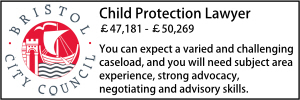NHS trusts, non-clinically trained staff and duties of care
- Details
 The Supreme Court has found a hospital liable for inaccurate waiting time information given by its A&E reception. Peter Downey and Mark Ashley consider the implications.
The Supreme Court has found a hospital liable for inaccurate waiting time information given by its A&E reception. Peter Downey and Mark Ashley consider the implications.
The long-awaited decision in Darnley v Croydon Health Services NHS Trust [2018] UKSC 50 was handed down by the Supreme Court yesterday. This case goes to the very heart of tort law and asks the question whether or not it was fair, just and reasonable to impose a duty of care on the non-clinically trained receptionist in A&E.
Mr Darnley discharged himself from A&E just 19 minutes after attending for a head injury on the basis that he may have a lengthy wait. He later suffered serious and life-changing brain damage as a result of the delay in receiving treatment.
The claim was rejected by the High Court in 2015 and this ruling was upheld in the Court of Appeal by a 2 to 1 majority in 2017. The Supreme Court has overturned this ruling, finding for Mr Darnley.
In this briefing we look at this Judgment, which will be used to provide future guidance for the duties of receptionists and, more specifically, non-clinically trained support staff within a hospital environment.
The Facts
Mr Darnley experienced a blow to the head during an assault and attended the A&E unit at Croydon University Hospital (formerly Mayday University Hospital, Croydon). Upon arrival, a receptionist (who was not clinically trained) informed Mr Darnley that it would be four to five hours before he would be seen. Mr Darnley proceeded to wait for 19 minutes before discharging himself without notifying medical staff or the reception team.
The information provided by the reception staff was incorrect. Although 'the operational standard for A&E waiting times is that 95% of patients should be admitted, transferred or discharged within 4 hours of their arrival at any A&E department', the actual system in place at the Hospital's A&E department [1] confirmed that a triage nurse would examine patients within 30 minutes of arrival. A decision would then be made regarding how urgently care should be provided. A short time following Mr Darnley's departure, the triage nurse arrived at the A&E waiting area.
Mr Darnley was at home approximately one hour later when his condition deteriorated and he was returned to hospital by emergency ambulance. A CT scan revealed the presence of an extradural haematoma and Mr Darnley was transferred to St George's Hospital, Tooting, where surgery was undertaken. However, by this point it was too late to prevent serious and permanent brain damage resulting in long-term disabilities.
The Trial
Mr Darnley brought a claim in which he alleged that there was an expectation for "a receptionist to tell a head injury patient that he will be triaged within 30 minutes…Had the Claimant been told this he would have stayed and would not have suffered the damage which was in fact sustained." [2]
The Trust argued that there should not be "an assumption of responsibility on the…civilian reception staff giving inaccurate or incomplete information concerning waiting times in the A&E department. The imposition of such a duty would be unreasonable and…would make being an NHS receptionist impossible." [3]
The Trial judge found that if Mr Darnley had waited to be triaged within the accepted 30 minute timeframe, his treatment would have been expedited and he was likely to have made a full recovery.
It was not clear when Mr Darnley was called by the triage nurse for initial assessment. However, any delay after 19 minutes was considered not to be causative of any loss as Mr Darnley had, by this point, already left the hospital. The Trust argued that "the Claimant's decision to leave was a new independent act which broke any chain of causation." [4]
The issues for consideration at first instance and Court of Appeal
The pivotal consideration lay within the fundamental principles of tort law. As outlined in Caparo Industries PLC v Dickman & Others (1990) UKHL 2, the question was whether or not it was fair, just and reasonable to impose a duty of care on the non-clinically trained receptionist.
Mr Darnley relied upon the findings of Kent v Griffiths [2000] EWCA Civ 25, in which there was a substantial delay in an ambulance responding to an emergency call of 45 minutes. The Court held that it was reasonably foreseeable that the Claimant would suffer additional and avoidable illness if an ambulance team, who had accepted the emergency call, did not arrive promptly. In 2015, the High Court in Darnley rejected this argument in favour of the Defendant Trust.
This ruling was upheld by the Court of Appeal in March 2017. The Court found that there was no general duty upon receptionists to keep patients informed about likely waiting times. The "reception staff in the A&E department…were there to perform a clerical function, namely to take down details of new arrivals and pass them onto the triage nurses. Giving information about waiting times was not part of their function." [5] Further, the Court observed that any duty owed by a receptionist could not extend to liability for the consequences of a patient walking out without advice or notice.
The Supreme Court Judgment and its significance
The lead Judgment from Lord Lloyd-Jones, with whom Lady Hale, Lord Reed, Lord Kerr and Lord Hodge agreed, was handed down on 10 October 2018.
The Supreme Court has allowed Mr Darnley's appeal and in doing so has made the following findings:
That it is an established principle that a duty of care is owed by those who provide and run a casualty department to persons who present complaining of illness or injury. The scope of that duty extends to a duty to take reasonable care not to provide misleading information which may foreseeably cause physical injury. Furthermore, that the duty remains even if the information is provided by reception staff as opposed to medical staff.
The Court noted that receptionists are often the first point of contact for people seeking medical assistance and that, as a result, they are charged with the responsibility of providing accurate information as to its availability. The requisite standard is that of an averagely competent and well-informed person performing the function of a receptionist at a department providing emergency medical care. Responding to requests for confirmation of the usual system of operation within that department is well within their area of responsibility.
In this case, it was not unreasonable to require that, on arrival, patients be provided with accurate information that they would be seen by a triage nurse within 30 minutes. Mr Darnley was informed he would wait up to 4 or 5 hours to see a doctor which was incomplete, misleading and negligent.
It was found that the Court of Appeal's conclusion that the chain of causation had been broken by Mr Darnley leaving A&E, failed to take into account the effect of the misleading information provided to him and was inconsistent with the trial judge's findings of fact.
If Mr Darnley had been told he would have been seen within 30 minutes, he would have stayed and been seen before he left, he would have been admitted and told to wait and his collapse would have occurred within a hospital setting. His decision to leave was reasonably foreseeable and was made, at least in part, on the basis of the misleading information provided. Thus, Mr Darnley was absolved of all responsibility for his voluntary act of leaving the hospital. We question whether, in what the Supreme Court recognised as the "very difficult circumstances" of a busy A&E Department, it was correct for the Court to find that the hospital was solely to blame for what happened.
While the decision causes the hospital to be liable for its negligent advice, does it tip the balance too far in favour of claimants and too far away from notions of personal responsibility? In turn, does the decision adequately recognise the realities of an often over-burdened health service?
The impact
Approximately 450,000 people attend A&E departments in England every week. [6] Exposing untrained staff to potential negligence claims of this type could have serious ramifications for the NHS and, consequently, may limit resources yet further and the treatment it seeks to provide its patients. While the Supreme Court recognised the "colossal pressure" under which A&E departments operate, we fear its decision will only add to this.
While we expect that further guidance will be provided in future judgments to limit the ramifications of this decision, we would urge healthcare providers to provide immediate guidance to their first-line non-clinical employees to try and guard against misleading information being relayed to patients.
Peter Downey and Mark Ashley are Legal Directors at DAC Beachcroft. Peter can be contacted on 0113 251 4758 or
[1]NHS England, Operational Information for Commissioning, 'A&E Attendances and Emergency Admissions' (www.England.nhs.uk, 13 July 2017)
[2] Michael Darnley v Croydon Health Services NHS Trust [2015] 2301 EWHC 12 (QB)
[3] Michael Darnley v Croydon Health Services NHS Trust [2015] 2301 EWHC 13 (QB)
[4] Michael Darnley v Croydon Health Services NHS Trust [2015] 2301 EWHC 13 (QB)
[5] Michael Darnley v Croydon Health Services NHS Trust [2017] 151 Civ 12 (EWCA)






























